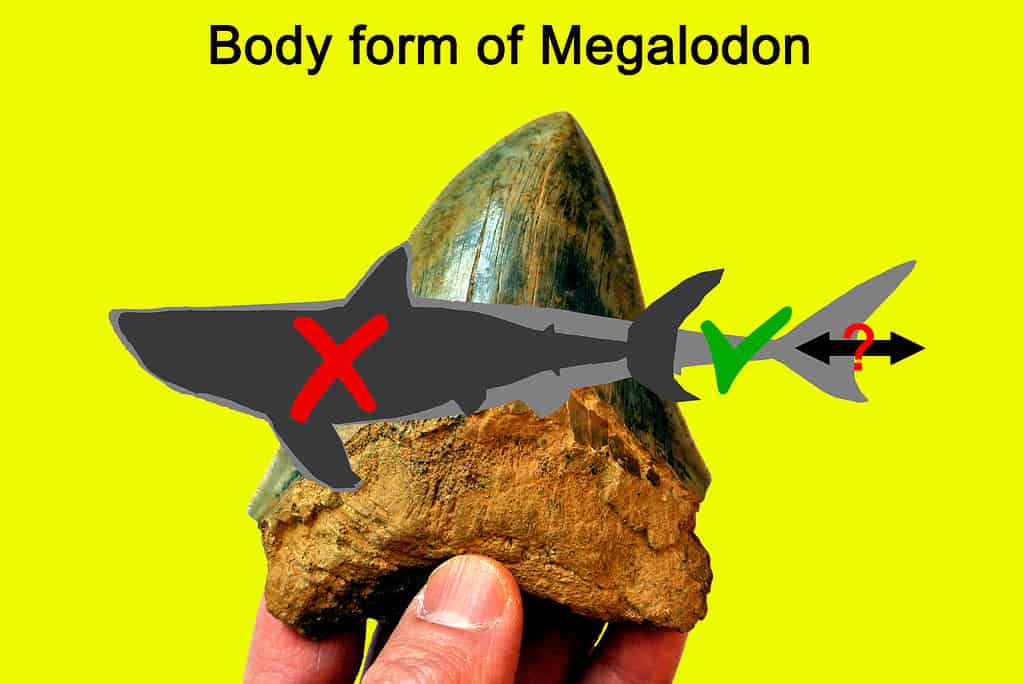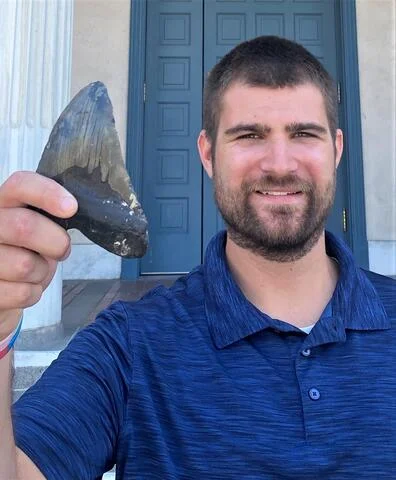
The Megalodon, an ancient shark that dominated the oceans millions of years ago, has often been portrayed as a monstrous, oversized great white shark. This image, perpetuated by popular movies like “The Meg,” has been ingrained in the public consciousness. However, a new study is turning this perception on its head.
Megalodon wasn’t a scaled-up version of the great white
Formally known as Otodus megalodon, this prehistoric giant lived roughly 15 to 3.6 million years ago, inhabiting nearly every ocean. Popular science has long depicted it as a hulking beast, stretching 50 to 65 feet. This makes it the largest fish ever known.
While it is still true that it was a colossal shark, new evidence emerging from a meticulous analysis of fossil vertebrae compared to those of great white suggests that O. megalodon had a more elongated, slender form, compared to its modern cousin.

Over two dozen shark experts from nearly 30 academic research institutions teamed up for this latest study, which took a fresh look at the incomplete set of fossil vertebrae unearthed in Belgium. A previous assessment suggested that the specimen measured more than 11 meters (36 feet), head and tail not included. However, another study that considered the same proportions of modern great white sharks reported that the same specimen was only 9.2 meters (30 feet) in length, this time including the length of the head and tail.
What could account for such a large discrepancy? The answer was hiding in plain sight, according to Professor Kenshu Shimada, a paleobiologist at DePaul University in Chicago and senior author of the study.
“While the previous studies were stuck with the idea that Megalodon ought to have looked like the modern great white shark, our new study highlights the discrepancy in size estimates and emphasizes the empirical fossil evidence–the fact that the Megalodon individual could not have measured less than 11.1 meters where that measurement does not even account for the head and tail lengths. Therefore, our general conclusion is that Megalodon must have had a slender body compared to the body proportion seen in the modern great white shark,” Shimada told ZME Science.
Phillip Sternes, co-lead author and a Ph.D. candidate at the University of California, Riverside, added that “the new study strongly suggests that the body form of O. megalodon was not merely a larger version of the modern great white shark.”

Still a lot of we don’t know about Megalodon
Shark skeletons are made mostly of cartilage, which don’t fossilize. This means that almost everything we know about Megalodon and other ancient shark species comes from their fossilized teeth and only a handful of vertebrae. Luckily, scientists can infer a lot of information just by looking at these teeth, which can reach a staggering 18 centimeters (7 inches) in length. In fact, the word megalodon simply means ‘large tooth’.
The megalodon’s massive, serrated teeth clearly suggest a meat-based diet, primarily consisting of whales, large fish, and even other sharks. This is further supported by fossilized whale bones, scarred with the unmistakable marks of megalodon teeth, revealing a predator that needed substantial prey to satisfy its colossal appetite.
With a jaw spanning up to 2.7 by 3.4 meters and lined with 276 teeth, it could easily engulf massive animals. This shark’s estimated bite force dwarfs that of great white sharks and positions it among the most formidable predators in Earth’s history.
While megalodon teeth are relatively common fossils, due to sharks continually shedding and replacing teeth throughout their lives, other parts of their anatomy are rarely discovered in the fossil record. This is why the Megalodon vertebrae from Belgium are so important, revealing deep insights into the anatomy of this formidable ancient predator.
Rethinking big sharks
It was always tempting to model Megalodon on living modern species like the great white, but this was just wishful thinking. “Our study suggests that we need to think ‘outside the box’ when it comes to inferring the biology of Megalodon,” Shimada told me in an e-mail.
The slender body form suggests that Megalodon may not have been as powerful a swimmer as the great white. “Megalodon was likely a slow cruiser,” Shimada notes, referencing one of his previously published studies on Megalodon’s fossilized scales, “with occasional ‘burst swimming’ for capturing prey.”
Despite these revelations, the exact body form of Megalodon remains elusive. The quest to fully understand this prehistoric giant continues. “The reality is that we need the discovery of at least one complete Megalodon skeleton to decipher its general body form,” Shimada concludes.
The bottom line is that there are many things we don’t know yet about Megalodon, despite what you may have heard or seen in movies and popular science documentaries. No, Megalodon isn’t alive, folks. However, Shimada isn’t upset by these misleading portrayals of this formidable ancient marine predator. In fact, movies like Meg often serve as inspiration for his new studies.
“I do personally enjoy watching those Sci-Fi movies as ‘pure entertainment,’ and they have actually stimulated my scientific curiosity, leading to my series of recent studies, such as ‘Was Megalodon that large?’, ‘Was Megalodon able to swim that fast?’, and the question addressed in the newest study ‘Was Megalodon really like a large version of the modern great white shark?’
The new study appeared in the journal Palaeontologia Electronica.


